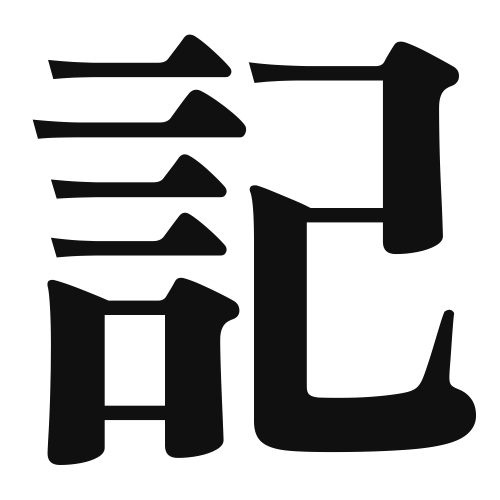1. Overview of Meaning
The kanji “記” (ki) means “to record” or “to write down.” It is often associated with documentation, notes, and preserving information.
2. Formation and Radicals
The kanji “記” is a compound character (会意文字) that combines two elements: the radical “言” (gen), which means “word” or “speech,” and “己” (ki), which can refer to oneself. Together, they convey the idea of expressing oneself through words.
The radical of “記” is “言,” indicating its connection to language and communication.
3. Examples of Usage
Common words and phrases that include “記” are:
- 記録 (kiroku) – record
- 日記 (nikki) – diary
- 記念 (kinen) – commemoration
Example sentences in daily conversation:
- 私は毎晩日記をつけます。 (Watashi wa maiban nikki o tsukemasu.) – I write in my diary every night.
- このイベントは特別な記念になります。 (Kono ibento wa tokubetsu na kinen ni narimasu.) – This event will be a special commemoration.
4. Synonyms and Antonyms
Similar kanji with related meanings include:
- 書 (sho) – to write, which emphasizes the act of writing rather than recording.
- 述 (jutsu) – to state or express, focusing on verbal expression.
Antonyms include:
- 忘 (wasure) – to forget, which is the opposite of recording or remembering.
5. Cultural and Historical Background
The kanji “記” has significant ties to Japanese culture, particularly in the context of literature and historical documentation. It is often used in the titles of historical texts and records.
Proverbs and idiomatic expressions that include “記” are:
- 記憶に残る (kioku ni nokoru) – to remain in memory, emphasizing the importance of recording experiences.
